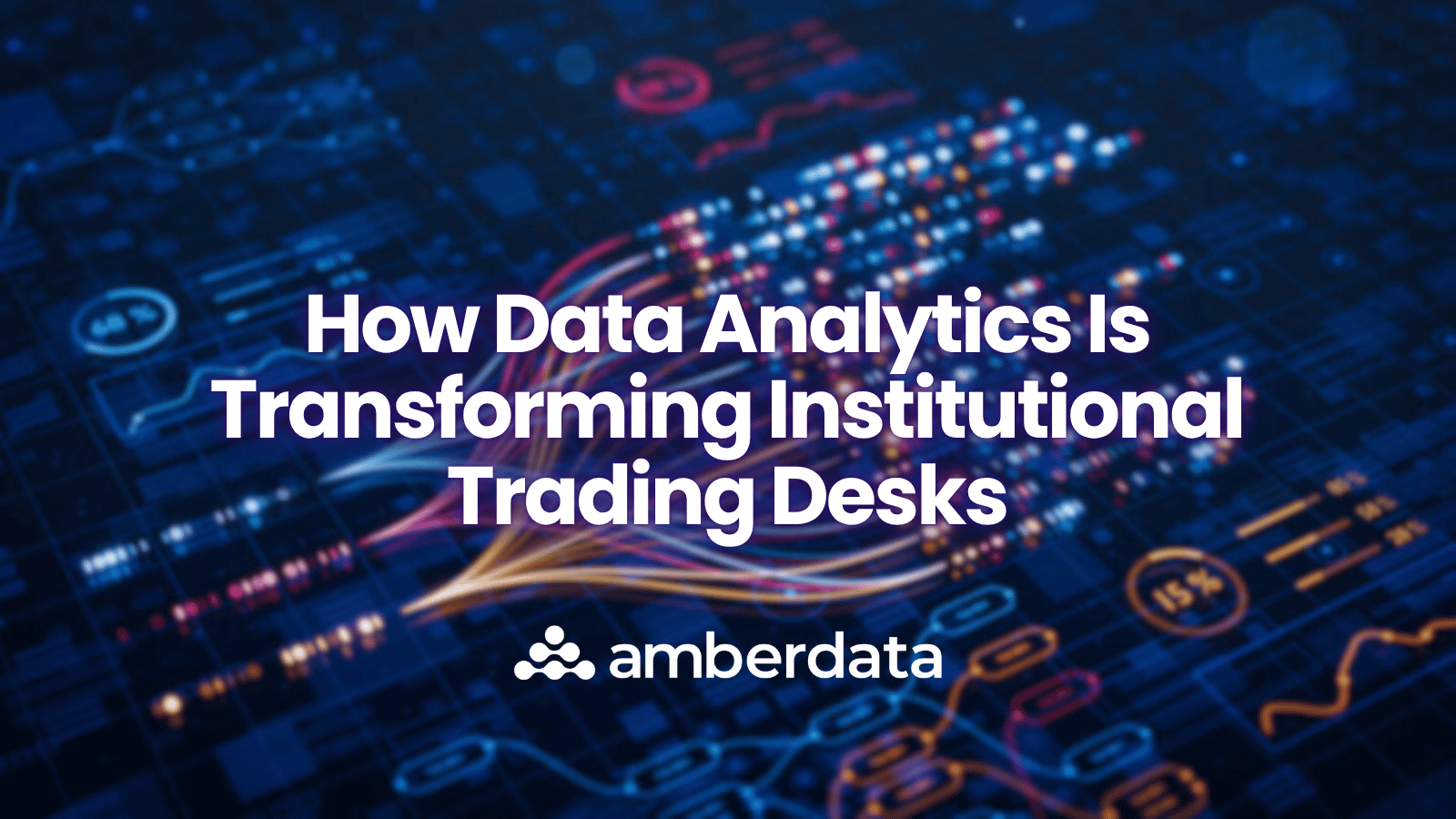How Data Analytics Is Transforming Institutional Trading Desks

In cryptocurrency, data analytics involves examining patterns or trends that can help inform decision-making. Data analytics enables traders to optimize their strategies and execution, gaining a competitive edge. Artificial intelligence (AI) and machine learning (ML) aim to take analytics even further. Traders build and run bots that automatically assess data and make trading decisions. High frequency and automated trading can increase the speed of transactions, which is especially valuable when it comes to crypto, as markets are extremely volatile.
Uncovering Market Trends
Understanding and analyzing market trends allows companies to align their strategies accordingly and anticipate future changes. Unfortunately, uncovering trends in cryptocurrency markets is often difficult with the vast array of data available. Data analytics, machine learning, and AI can improve understanding of the market. These tools can help in various ways, including:
- Quickly analyzing large datasets across multiple markets simultaneously
- Identifying patterns
- Using the data to predict future changes
- Removing emotional and inconsistent human decision-making
- Working nonstop at every hour of the day
Using AI in Crypto for Risk Assessment
Beyond uncovering trends, AI data analytics can help assess risks. The crypto market is incredibly volatile, but analysis uses precise mathematical models to provide highly probabilistic forecasts or predictions of future trajectories. When incorporated with machine learning, data analysis algorithms can adapt to changing market conditions to reduce risk.
AI systems can automate risk management. Trading bots that use AI often enable the establishment of precise risk limits. They can also use trading data to detect potential risks in real time and adjust strategies accordingly.
Implementing Algorithmic Crypto Trading
Algorithmic crypto trading gives institutional investors a competitive advantage, enabling the execution of complex strategies to capture fleeting market opportunities that would be impossible to capture manually. Algorithms used to operate bots must incorporate sophisticated rules based on factors like time, volatility, price, and order book depth. Machine learning for crypto trading enables continuous improvement in response to evolving market dynamics.
Successful algorithmic crypto trading starts with a rigorous approach to building bots as well as fully assessing the market and tailoring algorithms to suit particular investment strategies. This approach includes:
- Designing the core logic of an algorithm to effectively capture intended market signals
- Backtesting using high-quality historical data to validate performance and identify potential weaknesses
- Implementing risk management controls to mitigate potential losses and ensure regulatory compliance
Limitations of AI in Crypto
Despite the advantages that AI-powered crypto trading bots bring, they also have weaknesses, including:
- Training data: AI bots can be limited by the quality of their training.
- Speed: While these tools operate quickly, they can't always adapt well to market swings.
- Monitoring: Bots can't fully run independently. They need oversight to avoid failures.
- Performance: A bot may appear profitable during testing but later perform poorly.
- Flash crashes: Bots can contribute to crypto flash crashes by amplifying the existing volatility of crypto trading markets due to their quick response times.
Get the Data and Analytics You Need to Succeed in Crypto and Other Digital Assets
AI has several limitations in crypto, including operating with limited data. Amberdata provides comprehensive data and insights into crypto markets, empowering financial institutions with the information they need for everything from research to trading. Reach out to request a demo.
Disclaimers
The information contained in this report is provided by Amberdata solely for educational and informational purposes. The contents of this report should not be construed as financial, investment, legal, tax, or any other form of professional advice. Amberdata does not provide personalized recommendations; any opinions or suggestions expressed in this report are for general informational purposes only.
Although Amberdata has made every effort to ensure the accuracy and completeness of the information provided, it cannot be held responsible for any errors, omissions, inaccuracies, or outdated information. Market conditions, regulations, and laws are subject to change, and readers should perform their own research and consult with a qualified professional before making any financial decisions or taking any actions based on the information provided in this report.
Past performance is not indicative of future results, and any investments discussed or mentioned in this report may not be suitable for all individuals or circumstances. Investing involves risks, and the value of investments can go up or down. Amberdata disclaims any liability for any loss or damage that may arise from the use of, or reliance on, the information contained in this report.
By accessing and using the information provided in this report, you agree to indemnify and hold harmless Amberdata, its affiliates, and their respective officers, directors, employees, and agents from and against any and all claims, losses, liabilities, damages, or expenses (including reasonable attorney’s fees) arising from your use of or reliance on the information contained herein.
Copyright © 2025 Amberdata. All rights reserved.
Amberdata
Amberdata is the leading provider of global financial infrastructure for digital assets. Our institutional-grade solutions deliver data, analytics and comprehensive tools and insights that empower financial institutions to research, trade, and manage risk and compliance in digital assets. Amberdata serves as a...
